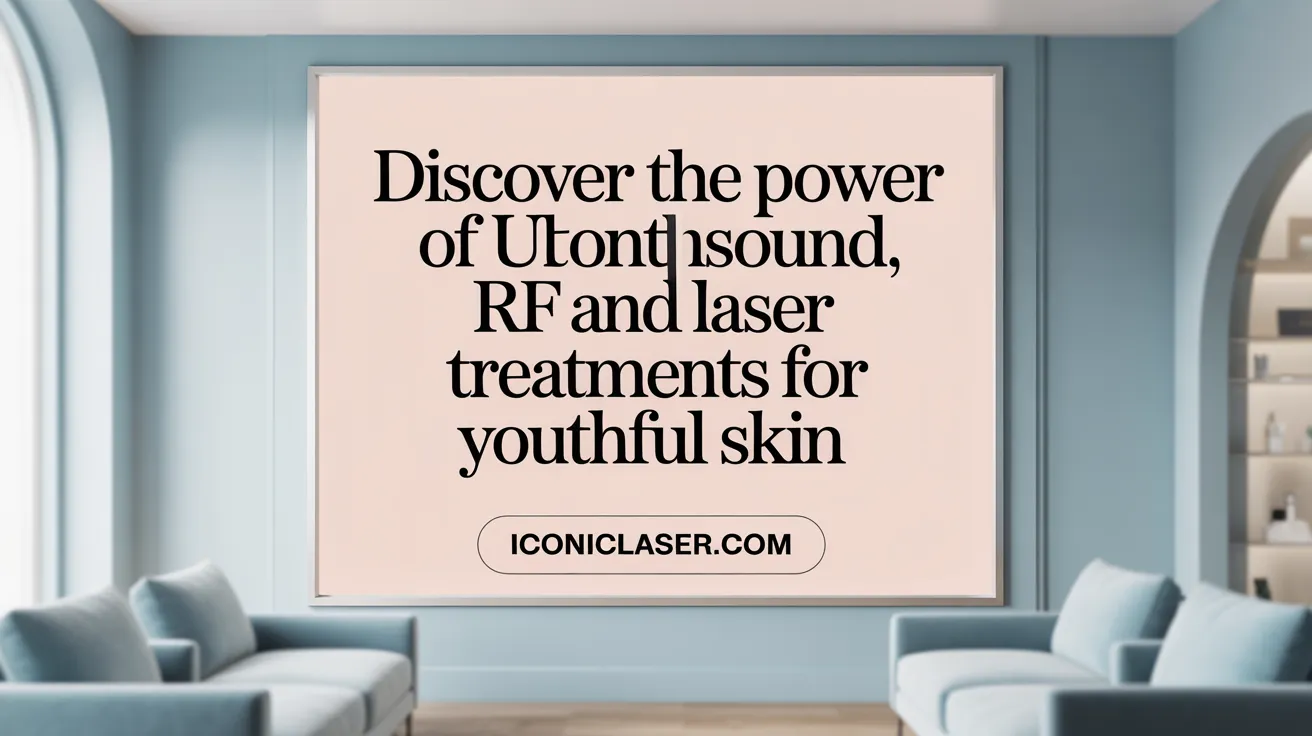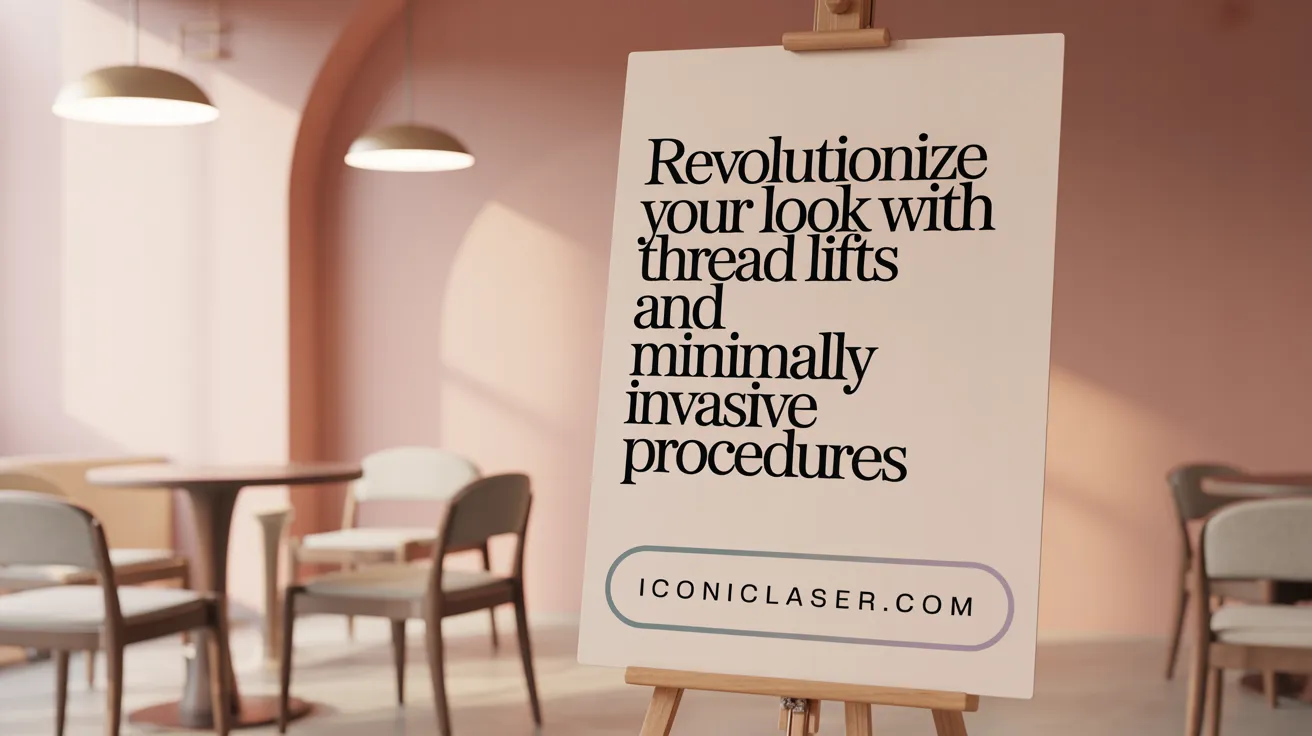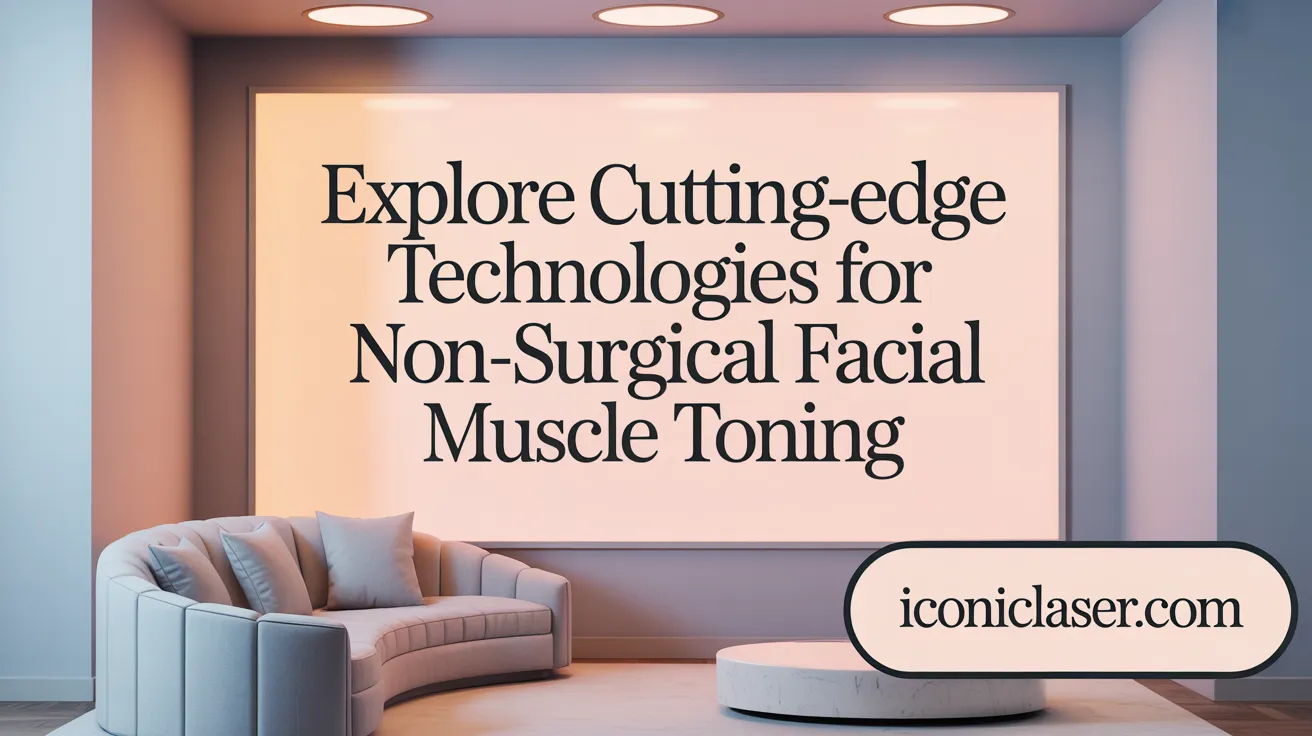A New Era in Facial Rejuvenation
Non-surgical facial sculpting has surged in popularity as a customizable, minimally invasive alternative to traditional surgery. With advancements in injectable treatments, energy-based therapies, and combined modalities, individuals now have access to tailored procedures that rejuvenate the face with little to no downtime. This article explores the latest non-surgical facial sculpting procedures, their benefits, mechanisms, and what patients can expect, guiding readers toward informed decisions on facial rejuvenation.
Injectable Solutions: Neuromodulators and Dermal Fillers
What are the main injectable treatments used in non-surgical facial sculpting?
Non-surgical facial sculpting primarily uses two injectable groups: neuromodulators like BOTOX Cosmetic® and dermal fillers. Neuromodulators, such as Botox and Dysport treatments, relax muscles that cause dynamic wrinkles. Dermal fillers include various substances like hyaluronic acid-based products (e.g., Juvéderm, Restylane), calcium hydroxyapatite (Radiesse), and poly-L-lactic acid (Sculptra). These fillers restore lost volume, enhance facial contours, and smooth wrinkles.
How do neuromodulators and fillers work and what areas do they target?
Neuromodulators block nerve signals to facial muscles, preventing muscle contractions that form wrinkles, especially effective on forehead lines, crow's feet, and glabellar lines (Cosmetic Injectables for Wrinkle Reduction). Dermal fillers physically add volume to key areas such as cheeks, lips, jawline, nasolabial folds, and under-eye hollows (Enhancing Lips with Dermal Fillers, Facial Contouring with Dermal Fillers. Besides volumizing, some fillers like poly-L-lactic acid also stimulate collagen production, improving skin texture and facial firmness over time (Minimally invasive facial rejuvenation techniques.
What is the typical duration and safety profile of injectable treatments?
The effects of neuromodulators typically last 3 to 4 months, necessitating periodic treatments to maintain results (Non-surgical facial rejuvenation). Dermal fillers vary widely; hyaluronic acid fillers often last 6 to 18 months, calcium hydroxyapatite up to 2 years, and poly-L-lactic acid may stimulate collagen for effects lasting up to 2 years after multiple sessions (FDA-Approved Injectable Fillers. These procedures are FDA-approved and considered minimally invasive. Common side effects include temporary bruising and swelling (Complications of minimally invasive cosmetic procedures). Rare but serious complications such as vascular occlusion require immediate correction, underscoring the importance of skilled medical providers performing injections (Safety in non-surgical cosmetic procedures.
Energy-Based Therapies: Ultrasound, Radiofrequency, and Laser Treatments

What energy-based therapies are popular for non-surgical facial sculpting?
Energy-based therapies have become prominent choices for non-surgical facial rejuvenation and sculpting. Ultrasound therapy, notably Ultherapy, utilizes micro-focused ultrasound waves to reach deep skin layers, stimulating collagen production. This process effectively lifts and tightens key areas such as the brow, chin, neck, and chest.
Radiofrequency (RF) treatments like Thermage and Morpheus8 combine heat with controlled delivery methods to stimulate collagen and elastin formation. Thermage uses monopolar RF energy for skin tightening and wrinkle reduction, while Morpheus8 integrates RF energy with microneedling, enhancing skin texture, tone, and laxity over the face and neck.
Laser skin resurfacing also plays a significant role by improving skin texture and pigmentation. Some combination treatments, such as IPL paired with RF, address several skin concerns simultaneously, including fine lines, discoloration, and skin laxity.
What benefits and timelines can patients expect from these treatments?
These energy-based therapies offer minimal downtime and are suitable for individuals with mild to moderate skin laxity. Patients usually observe gradual improvements over two to three months following treatment. Benefits include firmer and smoother skin, subtle lifting of facial contours, and reduction of fine lines and wrinkles.
Results typically last up to one year or more, depending on the specific procedure and individual maintenance. When performed by trained and qualified professionals, these treatments are considered safe with mild side effects such as temporary redness or swelling.
Treatment sessions vary but generally last between 30 to 90 minutes depending on the area treated, allowing patients to conveniently incorporate them into their routine without significant disruption.
| Therapy Type | Mechanism | Common Treatment Areas | Expected Results |
|---|---|---|---|
| Ultrasound (Ultherapy) | Micro-focused ultrasound waves stimulate collagen deep in the skin | Brow, chin, neck, chest | Skin lifting, tightening, subtle contour improvement |
| Radiofrequency (Thermage, Morpheus8) | Deep heat stimulates collagen and elastin production; microneedling with RF enhances texture | Face, neck, hands, body | Skin firmness, wrinkle reduction, better texture |
| Laser Resurfacing and IPL/RF Combination | Energy stimulates collagen; improves pigmentation and skin tone | Face, neck | Reduced fine lines, pigmentation, improved skin texture |
Thread Lifts and Innovative Minimally Invasive Techniques

How do thread lifts contribute to facial sculpting?
PDO thread lifts, a popular minimally invasive technique, use absorbable sutures inserted beneath the skin to lift sagging facial tissues. As these threads dissolve over several months, they stimulate collagen and elastin production, enhancing skin firmness and elasticity naturally. This dual action provides a subtle but effective contouring and lifting effect, improving facial definition without the downtime of traditional surgery. PDO thread lifts for facial lifting
What distinguishes thread lifts from surgical facelifts and what are their risks?
Unlike surgical facelifts, which require incisions, anesthesia, and longer recovery, thread lifts offer a quicker, less invasive alternative. Their results typically last from one to two years and focus on mild to moderate skin laxity. Although generally safe, risks of thread lifts include infection, thread migration, bruising, and swelling. These complications are uncommon, especially when performed by experienced practitioners. Post-procedure care involves avoiding strenuous activities and adhering to medical guidance to maximize results and minimize side effects. Complications of minimally invasive cosmetic procedures
Thread lifts bridge the gap between non-invasive treatments and surgical options, delivering natural-looking facial rejuvenation with minimal disruption to daily life. Non-surgical facelift options
Platelet-Rich Plasma (PRP) and Combined Facial Rejuvenation Techniques
What is the role of PRP in non-surgical facial sculpting?
Platelet-Rich Plasma (PRP) therapy utilizes a patient's own blood plasma enriched with growth factors to stimulate the skin's natural healing processes. This technique promotes collagen production and tissue regeneration, leading to improved skin elasticity, texture, and overall health. PRP injections can be used alone or alongside treatments like microneedling, laser therapy, and collagen masks to enhance facial rejuvenation effects. See more on Platelet-rich Plasma (PRP) Injections.
How do combination therapies benefit patients?
Combination treatments, exemplified by approaches like the Diamond Instafacial®, merge several modalities including laser therapy, microneedling, PRP, and collagen masks. This integrated strategy addresses multiple skin concerns concurrently, such as fine lines, uneven tone, and texture issues. By harnessing the synergies of these methods, patients achieve more comprehensive and efficient skin revitalization tailored to their individual needs.
Advantages of multimodal therapies
Using a multimodal approach allows practitioners to customize treatments based on diverse skin types and aging patterns. These therapies stimulate collagen at different skin depths, enhance healing, and reduce recovery times. Patients benefit from natural-looking improvements, minimal downtime, and prolonged rejuvenation effects. Explore Diamond Skin Therapy Treatments for more information.
Treatment customization
Customization is central to combined facial rejuvenation. Providers assess each patient's skin condition, aging signs, and aesthetic goals to select appropriate therapy combinations. This personalized plan optimizes outcomes, ensuring subtle enhancements and fuller facial harmony without surgery. Learn more about Customized Facial Rejuvenation with Dermal Fillers.
Non-Surgical Fat Reduction and Contouring Procedures
What non-surgical options exist for reducing facial fat and contouring?
Non-surgical facial fat reduction and contouring techniques offer effective alternatives to surgery for refining the jawline and under-chin area. Kybella injections utilize synthetic deoxycholic acid to permanently destroy fat cells beneath the chin and along the jawline, gradually improving the double chin appearance over a series of treatments.
CoolSculpting uses cryolipolysis, a fat-freezing technology, that targets and eliminates fat cells slowly over several weeks to months. This non-invasive method allows for contouring without incisions or recovery time.
WarmSculpting employs hyperthermic laser energy to precisely heat and destroy fat cells in targeted facial areas, with visible results developing around three months post-treatment. These approaches all serve to reduce fat deposits and sculpt facial features without surgical risk.
How effective and safe are fat reduction treatments?
These fat reduction procedures are considered generally safe and well-tolerated, with minimal downtime. Most patients observe gradual improvements, often requiring multiple sessions for optimal results.
Typical side effects include mild and temporary swelling, bruising, redness, or numbness in the treated areas. Patients with localized fat pockets, especially those close to their ideal weight, tend to experience the most consistent and satisfying outcomes.
By reducing submental fat and enhancing jawline definition, these non-surgical modalities provide natural-looking contouring with less risk and quicker return to daily activities than traditional surgical methods. For more details on non-invasive body contouring procedures and their safety and cost considerations of non-surgical body contouring, as well as surgical vs non-surgical body sculpting pros and cons, please refer to these resources.
Emerging Technologies and Muscle Toning for Facial Sculpting

What new technologies are enhancing non-surgical facial sculpting?
Innovative technologies such as Emface and Sofwave are revolutionizing non-surgical facial sculpting. Emface combines electromagnetic muscle stimulation with radiofrequency energy to lift, tighten, and tone facial muscles. This treatment enhances muscle definition and natural volume without the use of needles or invasive procedures. Sofwave utilizes ultrasound technology to stimulate collagen production, promoting skin tightening and lifting with no downtime. Both treatments target underlying structures beyond the skin surface, offering a comprehensive approach to facial rejuvenation.
How do muscle toning technologies contribute to facial rejuvenation?
Muscle toning devices improve the density and tone of facial muscles, addressing a critical aspect of aging that traditional skin treatments may overlook. By strengthening these muscles, treatments like Emface complement surface-level improvements in skin texture and volume. This leads to a more sculpted, youthful facial appearance achieved through gradual enhancements over several sessions. The gentle muscle stimulation also supports natural-looking results that enhance facial harmony and proportion as part of non-surgical facial contouring.
Advantages of muscle toning
- Enhances muscle firmness and volume naturally
- Complements skin tightening and volumizing treatments such as radiofrequency skin tightening and dermal fillers
- Non-invasive with little to no discomfort
- Stimulates collagen and elastin production
- Minimal to no downtime
Integrative approaches to facial sculpting
Combining muscle toning technologies with other non-invasive modalities—such as dermal fillers, radiofrequency skin tightening, and laser therapies—creates a balanced and personalized facial rejuvenation plan. This multi-dimensional strategy effectively addresses skin laxity, volume loss, and muscle tone, providing subtle yet impactful improvements in facial contour and overall appearance. Patients benefit from treatments that harmonize different tissue layers, yielding natural, refreshed results as detailed in Top 5 Non-surgical Facial Rejuvenation Procedures.
Safety, Risks, and Choosing the Right Practitioner

What safety considerations should patients keep in mind?
Non-surgical facial procedures typically have mild side effects such as bruising, swelling, redness, and tenderness. These symptoms are usually temporary and resolve quickly. However, there can be rare but serious complications like infection, vascular occlusion from dermal fillers, or allergic reactions. Proper patient selection, deep knowledge of facial anatomy, and expert injection techniques significantly reduce these risks. Prompt recognition and immediate management of adverse events, such as using hyaluronidase for vascular occlusion, are essential to avoid long-term damage.
How important is the choice of practitioner for successful outcomes?
Choosing a board-certified plastic surgeon, dermatologist, or an experienced aesthetic provider is crucial for both safety and achieving natural-looking results. Qualified practitioners create personalized treatment plans after evaluating medical history, skin condition, facial anatomy, and patient goals. They ensure realistic expectations, customizing procedures that suit individual needs. This professional approach minimizes complications and maximizes patient satisfaction.
What potential complications can arise and how are they managed?
Common complications include swelling, mild pain, bruising, and rare infections. Serious issues like granulomas or thread migration can occur after thread lifts but are infrequent with skilled hands. Vascular occlusion after filler injections requires immediate intervention to prevent tissue necrosis. Following treatment care instructions and consulting the provider promptly if symptoms worsen are vital steps in managing risks.
Why is customization and realistic expectation setting essential?
Every face is unique, so treatments must be tailored for balanced and harmonious results. Over-treatment or unrealistic goals can lead to unnatural appearance or dissatisfaction. A thorough consultation helps set practical outcomes aligned with patient desires and treatment limitations, ensuring both safety and high patient confidence (Personalized facial rejuvenation strategies, Tailored treatment plans for face shaping).
Embracing Non-Surgical Facial Sculpting with Confidence
Non-surgical facial sculpting offers a versatile and customizable array of treatments that rejuvenate appearance with minimal downtime and risk. From neuromodulators and dermal fillers to advanced energy-based therapies, thread lifts, and innovative muscle toning technologies, these procedures provide natural-looking enhancements tailored to individual needs. Selecting an experienced and qualified provider and understanding the benefits, limitations, and safety considerations are essential for optimal outcomes. As the field evolves, embracing these minimally invasive options can help individuals achieve refreshed, youthful facial contours without the commitment and recovery associated with surgery.
